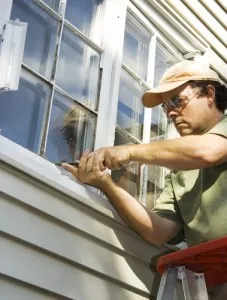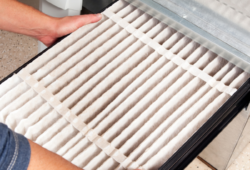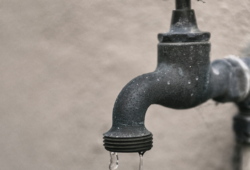Weatherization Projects That Maximize the Efficiency of Your Raleigh Home
Understanding the importance of home weatherization is easier with the following analogy. Have you ever walked a long distance outside in bitter cold weather? If you have your winter coat zipped up, thick gloves and a hat pulled down over your ears, you’re likely to stay pretty warm despite the biting wind. However, if you’re wearing an unzipped coat, thin gloves and a hat with holes in it, the cold affects you much more.

The same can be said about your home during the winter. If you have gaps and cracks around windows and doors, and other poorly sealed exterior wall penetrations, cold wind more easily makes its way inside to increase heating costs and make you feel less comfortable.
Fortunately, there’s a solution: stock up on items to complete weatherization projects on a free weekend. In a single day, you can weatherize your entire home to better protect it against the elements. All the supplies you need are available from your local home improvement store, and you can complete simple weatherization tasks without the help of a professional.
Why Weatherization Is Important
When air moves through your home’s exterior envelope, it’s called infiltration. The goal of home weatherization is to find and eliminate air infiltration. Once you do, you can expect to benefit in the following ways:
- Lower energy bills: The chance to save money is the primary reason to weatherize your home. On average, weatherization saves homeowners 25 to 30 percent on energy bills. Older homes with particularly bad air leaks stand to save even more.
- Longer HVAC equipment life: When air infiltration overworks your heating equipment, breakdowns occur more frequently, leading to expensive repairs and replacement costs. By lowering demand on your HVAC system, you help it last longer, which saves you even more money in the long run.
- Improved comfort: When you’re reading a good book from your favorite armchair, the last thing you want is a chilly draft to ruin the experience. A well-sealed home is less drafty and has a more consistent temperature throughout the entire home.
How to Weatherize Windows
As the leakiest areas in the average home, windows deserve your primary attention. To weatherize your windows, follow these steps:
- Replace any windows with cracked glass. Seal loose panes with window glazing compound.
- Remove any chipping paint and old, flaky caulk with a utility knife. Wipe away dust and dirt, and thoroughly dry the area.
- Apply caulk along the perimeter of the window casing. Use a smooth, fluid motion to apply an even amount of caulk. If excess product drips from the applicator, wipe it away with a wet rag. Let the caulk dry for several days before applying paint.
- Apply weatherstripping where the window closes on the frame to facilitate a tight seal. To ensure the proper length, measure twice and cut once. Place the strip snugly against the window frame, making sure the corners adhere tightly to the frame to prevent air leaks.
- Install interior window film if you don’t have storm windows. The thin plastic creates a barrier between the window and your home to greatly improve the insulating qualities of the glass.
- Hang heavy drapes over the windows to insulate them against the cold night air. Open the drapes during the day to take advantage of the sun’s heat.
Weatherizing Doors
Weatherization of exterior doors is similar to weatherizing windows. Here’s how:
- Follow the tips above to add caulk and weatherstripping to the stationary and operable joints of all exterior doors.
- For doors with windows, apply glazing or clear caulk along the edges of the windowpane.
- Adjust the door sweep so it creates a tight seal against the threshold when the door is closed. A rolled up towel works well for doors you don’t use often.
How to Weatherize Other Areas
- Electrical outlets on exterior walls are prime spots for cold drafts to enter your home. Unscrew the cover and insert a foam gasket around the sockets. Replace the cover and insert childproof safety caps to further block air infiltration.
- The attic hatch is another drafty spot. Insulate the attic side of the hatch and add foam weatherstripping around the edges.
- Wood fireplaces are notorious for leaking air. When the fireplace isn’t in use, close the damper and the glass doors. If you never use the fireplace, plug the chimney with insulation and seal the glass doors shut with caulk.
Learn more home weatherization tips from the experienced staff at Air Experts, or contact us at 919-480-2727 to schedule an appointment to improve your home!




